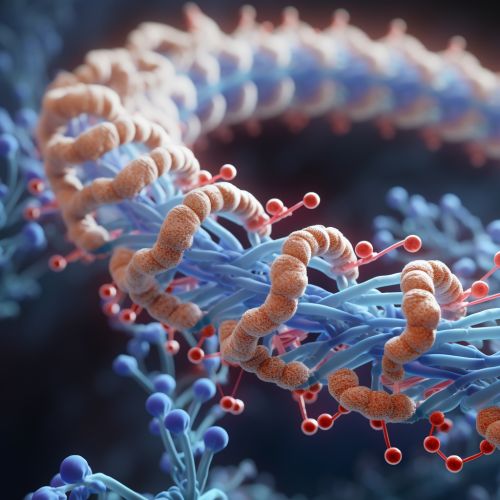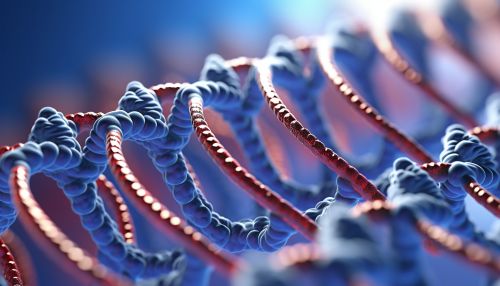Chromatin Remodeling
Introduction
Chromatin remodeling is a vital process that occurs within the cells of organisms, facilitating the compacting and decompacting of DNA. This process is crucial for the regulation of gene expression, DNA replication, DNA repair, and DNA recombination. It involves the restructuring of chromatin, a complex of DNA and proteins, primarily histones, that forms chromosomes within the nucleus of eukaryotic cells.
Chromatin Structure
Chromatin is made up of repeating units known as nucleosomes, which consist of a segment of DNA wound around eight histone proteins. The structure of chromatin is dynamic and can change to allow access to the DNA. This is where chromatin remodeling comes into play.


Chromatin Remodeling Complexes
Chromatin remodeling complexes are large multi-protein machines that reposition, eject or restructure nucleosomes, thereby changing the landscape of the DNA. These complexes use the energy from ATP hydrolysis to break the contacts between the histones and the DNA. There are four main families of chromatin remodeling complexes: SWI/SNF, ISWI, CHD, and INO80.
SWI/SNF Family
The SWI/SNF (Switch/Sucrose Non-Fermentable) family of chromatin remodeling complexes is highly conserved across species. These complexes are involved in a variety of processes, including gene expression, DNA repair, and cell cycle control.
ISWI Family
ISWI (Imitation SWItch) complexes primarily function in the spacing and sliding of nucleosomes, which is important for the regulation of gene expression and DNA replication.
CHD Family
The CHD (Chromodomain Helicase DNA-binding) family of complexes is characterized by the presence of chromodomains, which are involved in the recognition of specific histone modifications.
INO80 Family
The INO80 (INOsitol requiring 80) family of complexes is involved in DNA repair, replication, and recombination.
Mechanism of Chromatin Remodeling
The mechanism of chromatin remodeling involves the use of ATP to alter the structure of the chromatin. The remodeling complexes bind to the chromatin and hydrolyze ATP to cause a conformational change in the structure of the nucleosome. This can result in the sliding of the nucleosome along the DNA, the ejection of the histone octamer, or the replacement of standard histones with histone variants.
Role in Gene Regulation
Chromatin remodeling plays a crucial role in gene regulation. By altering the structure of the chromatin, remodeling complexes can expose or hide specific regions of the DNA, thereby controlling which genes are accessible for transcription. This allows the cell to control when and where specific genes are expressed.
Role in DNA Repair
Chromatin remodeling is also involved in DNA repair. When DNA damage occurs, remodeling complexes are recruited to the site of damage to open up the chromatin structure and allow repair proteins to access the damaged DNA.
Role in DNA Replication
During DNA replication, the chromatin structure must be opened to allow the replication machinery to access the DNA. Chromatin remodeling complexes play a crucial role in this process, facilitating the replication of the DNA by opening up the chromatin structure.
Role in DNA Recombination
Chromatin remodeling is also involved in DNA recombination, a process that is crucial for genetic diversity and DNA repair. Remodeling complexes facilitate recombination by altering the chromatin structure to allow the recombination machinery to access the DNA.
Conclusion
Chromatin remodeling is a vital process that plays a crucial role in many aspects of DNA metabolism, including gene expression, DNA repair, DNA replication, and DNA recombination. By altering the structure of the chromatin, remodeling complexes control access to the DNA, thereby regulating these processes.
